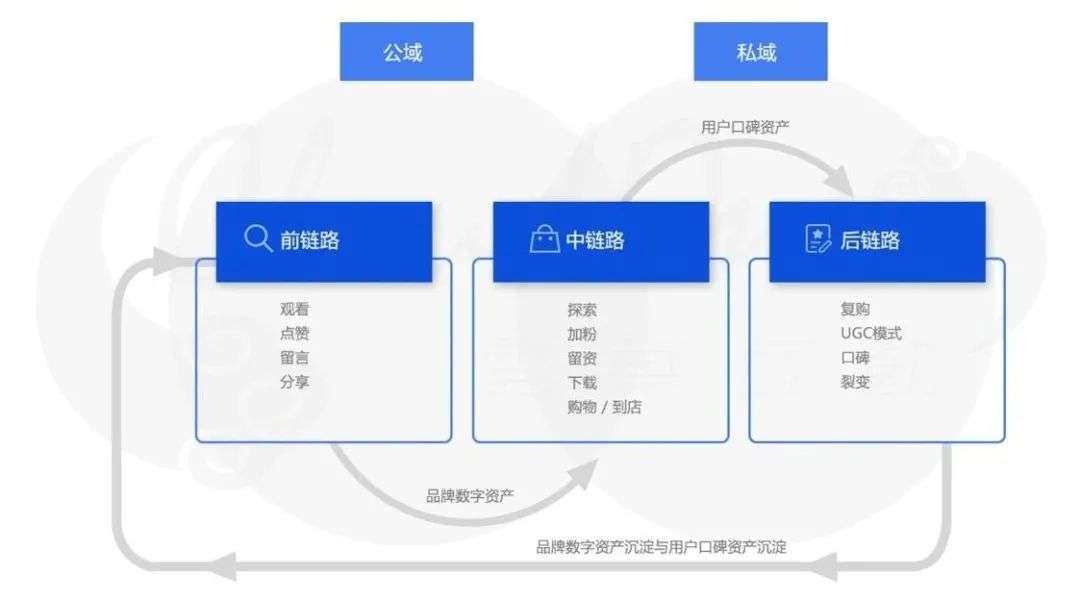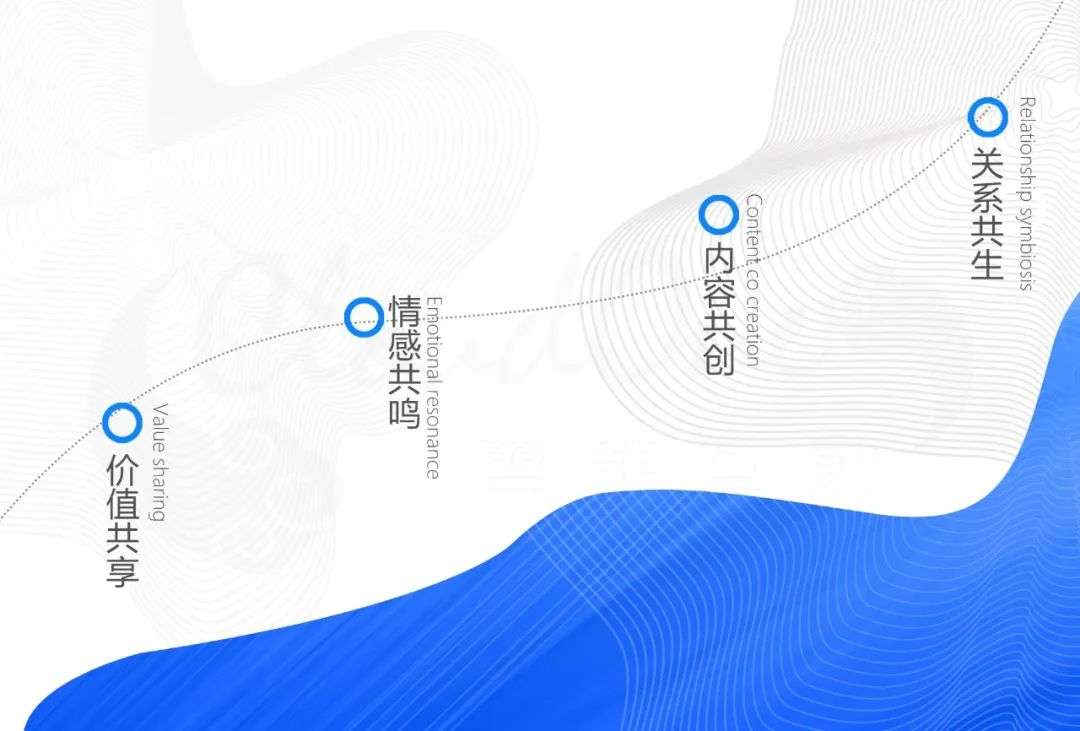How are these brands that flock to private domain traffic doing?
Private domain traffic is nothing new. After experiencing the impact of the epidemic, all brands have realized the importance of the DTC model, especially some traditional companies have successively started online strategies, and the concept of “private domain traffic” has been renewed There are two reasons for the rise:
First, from the perspective of platform soil, Internet platforms provide enterprises with comprehensive digital tools, such as official account content distribution, community operations, live broadcast and short video interaction, mini programs become official shopping mall carriers, and so on. In addition to the company’s own transaction center, the increasingly mature data center and content center support in recent years have enabled companies to flexibly combine and quickly configure in this “tool matrix” according to their own business needs, and build private Domain traffic operation system.
Second, for the brand side, the rise of private domain traffic has three important meanings for the brand side: From the perspective of the business model, private domain traffic can increase the repurchase, conversion, and recommendation of old customers, and it can drive users’ LTV From the perspective of marketing, the private domain traffic pool has more brand stickiness, which can reduce customer acquisition costs and increase the ROI of brand marketing; from the perspective of user management, private domain traffic is more Paying attention to user needs and interaction can allow users to establish a deeper trust relationship with the brand and cultivate loyal users.
Now nearly a year has passed. Let’s look back and see how these brands that flock to private domain traffic are doing?
Yunhua Interactive Digital Brand and Digital Communication Research Center found that brands that have made achievements in the private domain so far, everyone thinks of the few outstanding companies such as Perfect Diary and Weilai. Most of the companies are private The results of domain operations are not ideal. The reason is that there are several misunderstandings: first, the private domain is used as a means of saving money and as a new channel for selling goods; second, there is no strategy and strategic planning, and the gameplay of star companies is copied; Third, use traffic thinking to operate private domain users; fourth, regardless of primary and secondary, resources are scattered. The specific performance is that promotion is the leading factor, a pyramid scheme is used to encourage users to repeat consumption, send friends, and attract people. For this private domain traffic operation method, there are usually three problems: no data, no reach, No stickiness.
It needs to be emphasized that private domain operation is a means of brand marketing. Private domain operation belongs to only one technique, while brand assets and user assets belong to the scope of the same Dao. The good use of the technique will in turn bring us good Dao. Role, but it cannot be separated from Tao. Private domain traffic operations include both online and offline, which is an important part of the transformation of enterprises’ digital intelligence. Based on complete user data, it provides users with unified and improved products, experiences, marketing and services. This is the mystery of the brand to attract and retain customers.
Usually what we call brand equity includes user assets. The establishment and continuous precipitation of brand and user digital assets centered on consumers is the key to a company’s standing out in the current and future competition.
Every interaction between a brand and consumers should be valuable. The traffic accumulated in the public domain should not only be a one-time traffic, but should be used to precipitate the brand and user data assets through a carrier such as the private domain, so as to guide the future brand The direction and strategy of the layout.
The precipitation of user assets is mainly reflected in two aspects. One is to motivate users to become KOCs or KOLs of the brand to improve the efficiency of planting grass; the other is to occupy the minds of users. When the brand is spreading, it can help the brand to further spread useful information. . The digitization of brand equity can improve the efficiency of the company’s internal work. Brand equity indicates the direction of brand building, so that all resources and effects can be worked hard in one aspect, and continue to accumulate to form a real barrier for the brand.
Consumer Purchase Journey (Consumer Purchase Journey)
Brand equity is often not formed overnight. It includes four basic dimensions: brand awareness, perceived quality, brand association, brand loyalty, and there is a certain causal relationship between each dimension, so when building brand equity , Should reset and extend the consumer behavior link, use data as the basis, product as the medium, and content as the core, to improve the closed-loop construction of the brand’s social ecology, and to achieve the overall improvement of brand, repurchase rate, and user stickiness.
The definition of private domain user operation is based on technology, tracking user data, and influencing users through digital tools and touch points, thereby enhancing brand and user stickiness and maximizing customer life time value (life time value) . Focus on long-term user value, that is, LTV’sIn construction, everyone’s attention to traffic should truly become attention to the user’s mind, and the only way to truly grasp the user’s mind is useful traffic.
Users being pulled into the private domain traffic pool does not mean that the work is over. On the contrary, this is a new beginning. Before, everyone’s focus was on recruiting new users and transforming users. Now we need to change our mindset. , To improve the ability of the brand to maintain users.
The desire of contemporary and future users is often no longer simply confined to consumption, but also to create value. In a future full of uncertainty, merchants who only do traffic business but lack their own brand power are more likely to fall into passiveness amidst changes and competition. Facing the most digitalized Chinese consumers in the world, brands have built a more decentralized form of e-commerce, allowing brands to accumulate their own user assets and can tap the full life cycle value of users.
User value creation model (Co-Creation)
Performance of user value creation at different stages:
Value sharing: Consumers surround the brand based on product functions and brand interest attributes, looking forward to more benefits or services;
Emotional resonance: consumers agree with the value and concept of the brand;
Content co-creation: Based on good profit incentives and service experience, users are willing to produce branded content for sharing;
Relationship symbiosis: the brand and the consumer are bound to each other, the brand has fans and mutual empowerment, the brand brings emotion and benefit value to consumers, and the consumer brings new users to the brand, bringing word of mouth and bringing conversion; /p>
Extending from product value sharing to “emotional resonance, content co-creation, and relationship symbiosis”. In this process, the key is to provide users with “high content relevance, resonant scene experience, and efficient conversion value-added services” , Service evolution driven by marketing, so that every service point has the opportunity to become a value-added point.
When we ask for external traffic, why don’t we manage the “reservation” well, and the “reservation” can truly form what we call private domain traffic.
Using big data to determine the source of public domain traffic, who are the users who clarify the brand? What are their characteristics? Where are they distributed? How to link them? How to achieve profitability? How to achieve replication? Understanding the characteristics of the above users can create refined content, realize direct dialogue with users, operate and provide consumer value, and narrow the distance between brands and consumers.
“Retention” refers to the refined operation of users. In the platform user system, the brand classifies users, including new users, ordinary users, seed users, value users, and core users. The value user pays for your product, while the core user pays for the product, and it is very likely to repurchase. Through the big data method, the user will be refined and analyzed, and different operating strategies will be made for different customers. To achieve the effect of maximizing ROI, this ROI not only points to the balance of benefits and costs at the business level, but also points to the balance of per capita input and output value at the human resources level.
Private domain traffic helps companies to more in-depth marketing, from “0 to 1” to help zero-based brands increase user reach and user stickiness, thereby driving consumer net worth and repurchase frequency. As the saying goes, if a worker wants to be good at his work, he must first sharpen his tools. 2021 will be the year of the explosion of private domain traffic. It will be a competition for corporate private domain operating capabilities. The Eight Immortals will cross the sea and each will show its magical powers.





